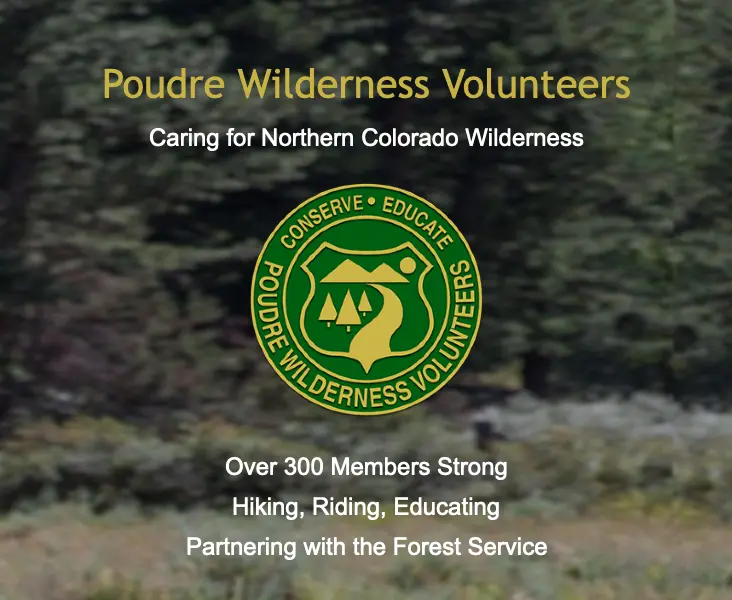-
Identification and Ecology of Stream Macroinvertebrates
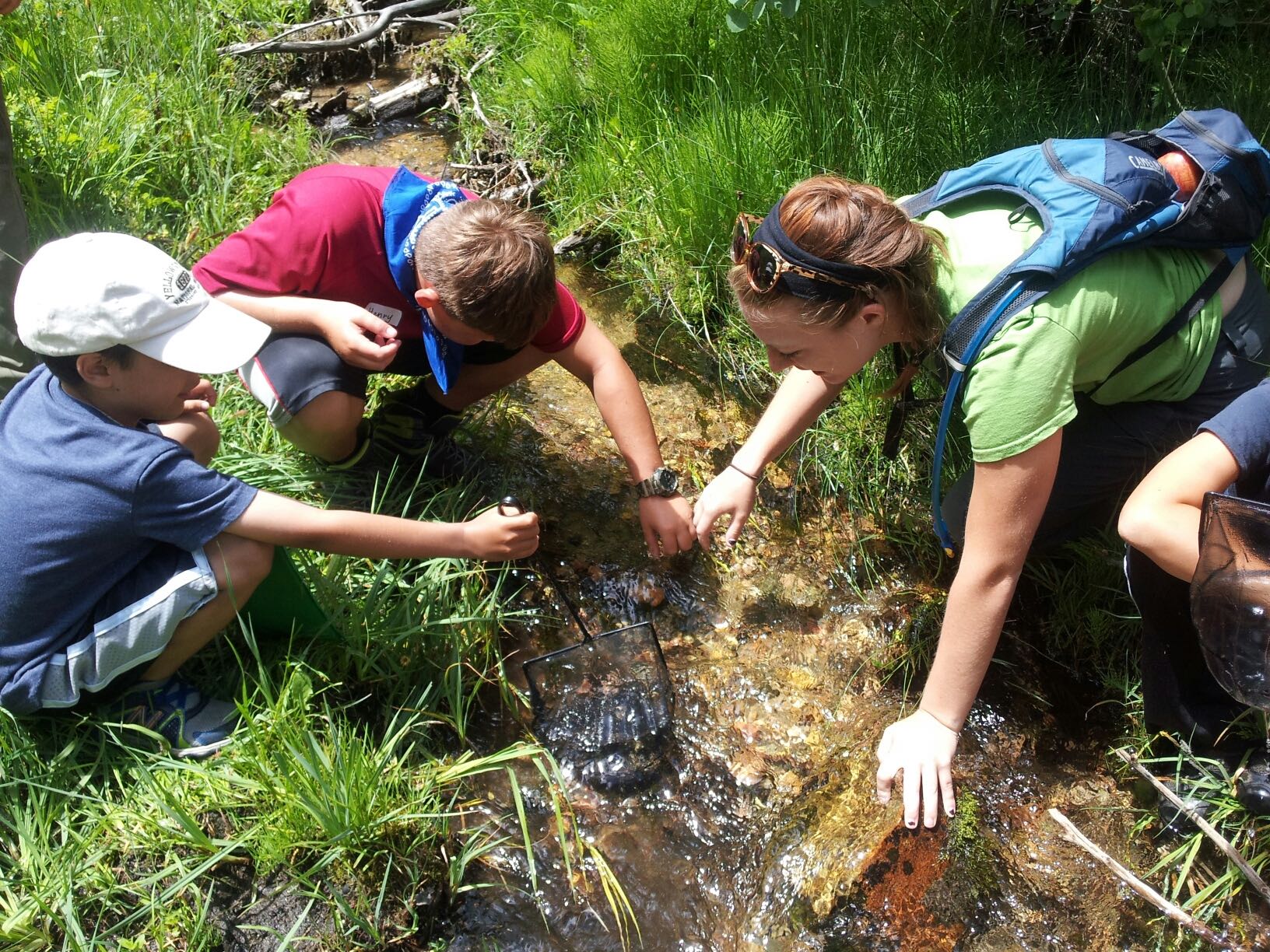
Mike Higgins has been with the PWV since 2019. He recently retired from the US Fish and Wildlife Service and has studied invertebrate communities in streams and wetlands for over 25 years. He gave an interesting presentation on the identification and ecology of stream macroinvertebrates. He identified several of the “bugs” that we see near rivers and streams. He also explained how these invertebrates help keep streams healthy. Please review Mike’s Zoom presentation dated July 12, 2023.
-
Wolverines : Research, Sightings, and Current Threats
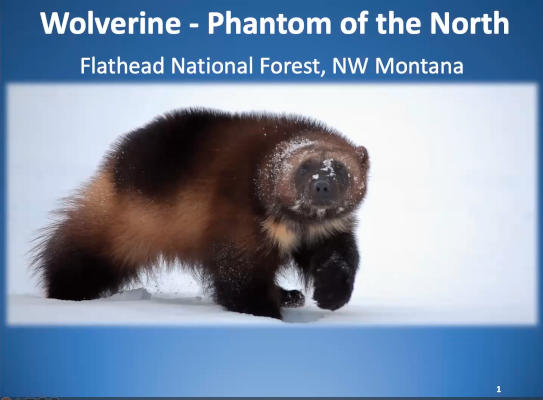
PWV member, Pete R., shares his experiences as a graduate student live-trapping wolverines in the Flathead National Forest south of Glacier National Park during the winters of 1975-76 and 1976-77. The wolverine study headed by Dr. Maurice G. Hornocker was the first research study of live wolverines using radio telemetry. In his presentation, Pete discusses the logistics of live trapping and radio-collaring wolverines, winter life in the backcountry, the results of Dr. Hornocker’s five-year research study, and current threats to wolverines. Pete spent three-and-a-half months each winter season living in the backcountry live-trapping wolverines. Presented as a Zoom presentation February 2022.
-
Summer Wildflowers of the Canyon Lakes Ranger District
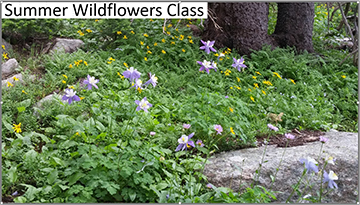
If you enjoy our diverse wildflower population and want to learn more about the features and names of our familiar blooms, you can view our Zoom presentation. On April 27, 2021, Ronda Koski, fellow PWV and Larimer County Native Plant Master, walked us through the photos and botanical names of those we are likely to encounter. Here is Ronda's Zoom presentation:
Here are links to websites that Ronda Koski recommends for Colorado wildflower identification.
These are links to downloadable apps for plant identification.
Ronda Koski - Class Instuctor
-
The Basics of Bird Watching On or Near the Northern Front Range
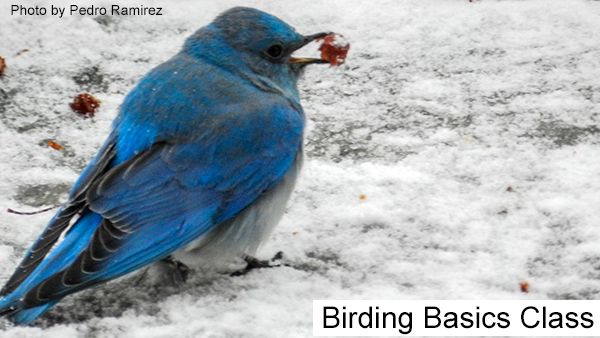
Birding is one of the country’s fastest-growing hobbies with more than 65 million Americans actively pursuing this activity. Join Pete Ramirez, a PWV member, who retired from the U.S. Fish & Wildlife Service in 2020 and spent a large portion of his career in the conservation of birds. Pete’s presentation, given via Zoom on March 23, 2021, covers how birds benefit our environment and quality of life, equipment needed for birding, tips for using a bird field guide, and tips on identifying birds. Pete finds birding to be both fun and challenging and says it’s almost like a treasure hunt. Enjoy the world of birding and Pete’s talk and slides.
-
Rattlesnake Bite Incident
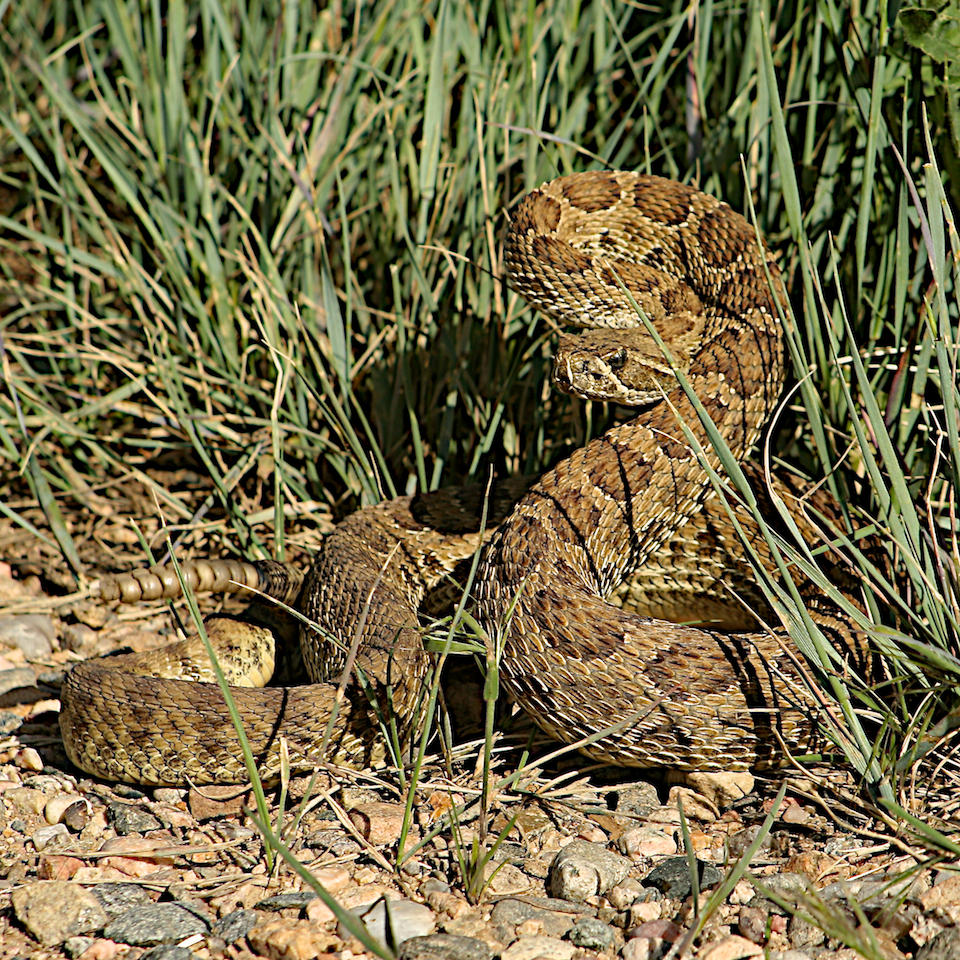 As I walked along the trail back to my car, I noticed a tingling feeling around my lips and eyes. The tips of my fingers and toes were also tingling. Five minutes earlier I had stepped on what I thought was a cactus. This is an odd response to a cactus wound, I thought. As I continued walking, the tingling became more pronounced, and I had the sensation that the world was closing in on me. I began to worry I might not be able to make the remaining half mile down the trail to my car, where my wife was waiting. I stopped several times in the last hundred yards to collect my strength. At last, I made it. "Take me to the hospital emergency room," I mumbled to my wife, as I opened the car door and collapsed into unconsciousness.
As I walked along the trail back to my car, I noticed a tingling feeling around my lips and eyes. The tips of my fingers and toes were also tingling. Five minutes earlier I had stepped on what I thought was a cactus. This is an odd response to a cactus wound, I thought. As I continued walking, the tingling became more pronounced, and I had the sensation that the world was closing in on me. I began to worry I might not be able to make the remaining half mile down the trail to my car, where my wife was waiting. I stopped several times in the last hundred yards to collect my strength. At last, I made it. "Take me to the hospital emergency room," I mumbled to my wife, as I opened the car door and collapsed into unconsciousness.My wife, of course, was shocked to see the man she had left only an hour ago in perfect health now slumped in a heap halfway into the car. Fortunately, a young couple was nearby and they called 911 for help. The 911 dispatcher advised the couple to stretch me out on the ground and immediately begin CPR treatment until the paramedics arrived. Because of my age, everyone assumed I had suffered a heart attack, including the paramedics who arrived less than 10 minutes later to find my heart racing and my blood pressure exceedingly low. After they managed to stabilize my life-threatening blood pressure, I revived enough to complain about my big toe. My shoe was removed and the paramedics discovered two puncture wounds on the bottom of my big toe. How these had come to be there was a mystery,
But my symptoms were consistent with a snakebite and they radioed ahead to the hospital so they could begin thawing the snake antivenom, a process that takes over an hour. In the meantime, the ambulance raced to the hospital.
Each year in Fort Collins a couple dozen people are bitten by rattlesnakes. It is rare to die from a poisonous snakebite (less than 10 of some 8,000 bites in the U.S. each year result in death), which is attributed to generally excellent prompt emergency care response. Most of the bites are to young men who are "fooling around" with rattlesnakes and suffer the consequences. Of the rest of us, few are as foolish in their behavior as I was. I hope my embarrassing example might keep someone else from suffering a similar fate.
I am not unaware of rattlesnakes. I have attended numerous Poudre Wilderness Volunteers first aid classes in which snake bites and rattlesnakes are always discussed. In fact, I have seen numerous rattlesnakes both on and off trails near Fort Collins. I know perfectly well that the trail I was on behind Hughes Stadium near the Horsetooth Reservoir is rattlesnake habitat. But, on this particular day, I appeared not to be thinking clearly, to say the least.
A few months before, I attended a presentation by an author on a book tour promoting his book on barefoot walking. I liked the idea of walking barefoot, purchased a copy of his book, and started a program of conditioning my feet. The program involves walking barefoot every other day on paved paths, dirt and grass. The idea is to start by walking 100 yards barefoot and to continually increase this distance over a three month period, by which time one’s feet should be conditioned and tough enough to walk barefoot on most surfaces.
My wife and I would often go for walks on dirt hiking trails in the Fort Collins area and end the walks with side trips to Fort Collins city parks, where there are paved bike and walking paths in the midst of lush grass that seems ideal for barefoot walking.
After I had been doing this for a couple of months, we went hiking on a dirt trail near Hughes Stadium. Upon reaching the top of the hill at Horsetooth Reservoir, my wife decided she was tired and went back to our car to wait for me to finish the walk to the water’s edge. On my way back, I decided to skip the usual trip to a Fort Collins park and walk the final mile on a smooth dirt trail in my bare feet. I know. We had even seen a freshly shed snake skin on our way up the trail. But, when you are young and fearless, you think you will live forever.
Focused on my barefoot walking, I ran into a rough patch of gravel and without thinking stepped off into the soft cool grass at the side of the trail. In a short distance, I felt a sharp pain on the bottom of my big toe. I thought I had stepped on a cactus. I bent down expecting to pull a cactus thorn from my bleeding toe, but I couldn't find one. It never occurred to me I had been struck by a snake. I didn't see or hear a snake before, during, or after the bite. In fact, I sat down on a big rock to put my socks and shoes back on, so I could get back to the car where my wife was waiting for me.
At the hospital, the doctors and nurses worked to stabilize me while the antivenom continued to thaw. Freezing it extends its shelf-life significantly. Finally, an hour and a half later, they were able to administer the antivenom intravenously and I was moved into the Intensive Care Unit so I could be watched overnight. Every six hours I received another vial of antivenom, until I was administered four vials in total.
After the final vial of antivenom, it was determined that I could leave the hospital and return home. My leg was swollen to nearly twice its normal size, and I could walk only with the help of a walker. During the first night home, a large blister, about a third the size of my big toe formed on my toe. It continued to grow larger until I was alarmed enough to call the doctor. I was advised not to touch it, and to allow it to open up and drain naturally, if that was what it was going to do. I was prescribed antibiotics and told to keep the toe as clean as possible. In practice this meant sitting in a chair for hours and hours at a time, with my foot propped up in front of me where I could see the blister grow and split open, oozing a gooey substance. Quite depressing. I became concerned I might lose the toe, but the doctor advised me that while this wasn't likely, it was possible if there were complications. I made sure the toe was well coated with antibiotic ointment to reduce that risk.
I am now six weeks removed from the incident. I have not yet had a real shoe on my foot, but the swelling has been greatly reduced and I am able to limp around in a pair of sandals. At the three-week doctor visit, the doctor cleared the goo and blistered skin, and we could see nice pink new skin forming underneath. That is encouraging. In a couple of weeks, the remaining minor scabs should drop off my tender new skin and I should be cleared to put on socks, my high-top thick leather hiking boots, and hit the trails again.
I do not yet know what the final cost of this incident will be. I’m at $20,000 and counting. Research on the Internet indicates that the total cost for a snakebite typically ranges from $10,000 to $150,000. I have insurance, so I will not have to bear this cost directly. The damage to my psyche is probably more than this. I had plans this summer to solo hike the Colorado Trail. Now I am re-evaluating whether it is a good idea to ever hike alone. Especially for one in his seventies. At the very least, I have a renewed appreciation for the dangers of the natural world, as well as a new sense of what my place in it should be. I'm just thankful I will have a chance to be hiking the trails again. When you see me, you can be sure I am taking to heart “safety”, the PWV number one priority when on trail patrols.
What To Do If You Get Snake Bite:
1. Move away from the snake. You don’t want a second bite.
2. Seek help. If you have a cell phone that can be used at your location, call 911. Note that in some circumstance you may be able to make contact with a 911 service even when there is no cell phone commercial service in that area. If you have a satellite communication device such as a SPOT Satellite GPS Messenger, press the SOS button for emergency rescue.
3. If there are others in the area, obviously send them for help or if help is not available within a couple of hours, have them help you evacuate.
4. Keep the bite wound below heart level if possible to slow circulation of the venom.
5. Minimize movement of the affected area.
6. Remove any jewelry in the affected area before swelling occurs.
7. If you can expect emergency help within a couple of hours stay put. If not, consider moving for help at a pace that keeps your heart rate down to reduce rate of venom circulation through your system.
8. Do not try to remove venom by sucking or cutting and sucking the bite area. This does not work. Venom is typically injected too deep to extract by this method. You need to get to medical treatment to get antivenom administered intravenously as soon as possible.
9. Do not restrict blood flow from the area of the snake bite by use of a tourniquet.
10. Do not apply cold packs to wound or swelling. This makes things worse.
11. The above advice does not address all situations. What if one is in the wilderness on a solo hike or backpacking trip hours from help? PWV strongly recommends members patrol in pairs.
-----------------------------------------------------------------------------
How to Avoid Snake Bite:
1. Stay vigilant and on the alert for rattlesnakes when in areas known for the critters. Their colors and patterns tend to blend with the natural surroundings.
2. Rattlesnakes are common on the arid hiking trails around Fort Collins and at the lower elevations of the nearby mountains. Typically they do not live above 9,000 foot altitude but that is not to say there are no exceptions.
3. In rattlesnake country ideally wear high-top leather boots and long pants. Fangs are less likely to penetrate leather. Long pants may deflect a leg bite. Flip-flops and bare feet obviously offer no protection. In addition to hiking boots, PWV Weed Patrol participants are required to wear PWV provided Kevlar knee high gaiters that cannot be penetrated by snake fangs.
4. When climbing trails and using handholds on rocks, roots, and logs, be careful of what may lurk there.
5. Try to stay on established trails where rattlesnakes can be more easily spotted. Rattlesnakes blend in more readily in off-trail surroundings.
6. Check your surroundings carefully when you need to step off the trail for a rest break or any other purpose.
7. Be aware that not all rattlesnakes give a warning rattle and when they give one it may be too late to move.
8. If you spot a rattlesnake, don’t mess with it, reverse your course or circle around it giving a wide berth of at least the length of the snake. Warn other hikers of the danger.
-----------------------------------------------------------------------------
July 2013 article written by Karl Riters who is a resident of Fort Collins and a member of Poudre Wilderness Volunteers

